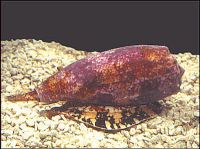Friday, April 26, 2024
News and Views from the Global South
ENVIRONMENT: “Doctor” Nature in Danger
Stephen Leahy* - Tierramérica
- “When we harm nature, we are harming ourselves,” says Aaron Bernstein, a doctor at Harvard Medical School and one of the authors of the upcoming book “Sustaining Life: How Human Health Depends on Biodiversity”.
Bernstein and Harvard colleague Eric Chivian wrote and edited contributions from more than 100 leading scientists in their new book, launched Apr. 28 by Oxford University Press and available in May.
Written for a general audience, “Sustaining Life” draws on the latest scientific evidence to make a persuasive case that the current extinction crisis, with species vanishing every day, is a serious threat to humanity equal to, if not greater than, climate change.
Pharmaceuticals, biomedical research, the emergence and spread of infectious diseases, and the production of food, both on land and in the oceans, depend on biodiversity – the rich variety of life on our planet.
The book documents seven groups of endangered species, including sharks, bears, primates and amphibians that are or have the potential to have “tremendous value to medicine and science”.
Among these are cone snails, a tropical species whose venom has tens of thousands of chemicals called peptides, short chains of amino acids. These unique peptides are incredibly powerful molecular probes and used in medical research.
“We’ve learned a great deal about how our brains function by using cone snail peptides,” said Bernstein.
The first new breakthrough in pain medication in years has also come from cone snails.
Thirty-three percent of terminal cancer and HIV (human immunodeficiency virus) patients for whom the strongest opiates were ineffective are now pain-free thanks to a pain-blocking peptide from cone snail venom.
Several other cone snail peptides are in clinical trials to treat diabetes pain, among other aliments, and show great promise, says Bernstein.
Cone snails live only in coral reefs and at least a third to one half of all reefs are in danger of dying off due to a combination of disease, pollution and climate change.
Horseshoe crabs have already provided the basis for detecting contamination in injectible medicines. They have also been crucial in understanding human vision, he says. But with only a limited habitat and the need to lay their eggs on beaches they are vulnerable to pollution and human disturbance.
Amphibians have been the source of new treatments for high blood pressure and potentially new pain killers, and may prevent bacteria from acquiring resistance to anti-biotics – a serious concern throughout the world.
However, amphibians are the most threatened of any group of organisms on the planet, with almost one-third of some 6,000 known species in danger of extinction, and more than 120 believed to have already gone extinct in the past few decades.
Medicines are just a small part of the role biodiversity plays in human well being. Without beneficial insects “most of the land ecosystems of the world would collapse and a good part of humanity would perish with them,” writes Edward O. Wilson, the world-famous Harvard expert on biodiversity in the book’s foreword.
Wilson also notes that four million bacterial species can be found in one ton of fertile soil and that most of cells in our bodies “are not human but bacterial: 700 species live within our mouths alone.”
Scientists estimate there are between three and 30 million species of plants, animals, fungi, bacteria and so on, but only 1.4 million have been identified so far.
Up to 30 percent of all species on Earth could vanish by 2050 due to unsustainable human activities – mainly deforestation, habitat loss and climate change – according to the 2006 Millennium Ecosystem Assessment, an unprecedented international four-year research effort.
“It could be as much as the extinction of half of all species by 2050,” says Stuart Pimm, a conservation ecologist at Duke University in North Carolina and a contributor to the book.
While humans might adapt to climate change, the natural world cannot adapt to rapid change. And it is unlikely we will be able to replace the services that nature provides us.
“Most people are unaware of this danger,” Pimm told Tierramérica. However, climate change solutions ought to preserve and enhance biodiversity, not harm them.
Like many areas of the world, including Latin America, large areas of South Africa’s east coast have been cleared of their native vegetation to grow non-native eucalyptus trees. While those trees will absorb carbon from the atmosphere, helping to combat climate change, the loss of the native ecosystem is of far larger consequence.
“We need to plant tens of millions of trees, but they should be native species so they enhance biodiversity,” he said.
Clearing forest for biofuel is another bad solution to climate change. Countries need to be paid to halt deforestation, Pimm said.
“Made aware of the crisis, people are willing to take action but don’t know what to do,” he added.
The book has a chapter on possible actions, including a “top 10” list. The first three: Use public transportation or bike or walk to work once a week; buy local organic food or grow your own; eat sustainable seafood, which means no farmed shrimp or salmon.
Many of these recommendations are intended to reduce carbon emissions, but simply using native species in gardens and reducing water use are important steps to preserving biodiversity, says Bernstein
“We also need government policies that provide incentives to protect natural systems; many do the opposite currently,” he said.
Finally, we need a new culture that values, cherishes and protects biodiversity, said the author. Such a culture exists when it comes to our health – now we need to understand that it is tied directly to the health of the natural world.
(*Originally published by Latin American newspapers that are part of the Tierramérica network. Tierramérica is a specialised news service produced by IPS with the backing of the United Nations Development Programme and the United Nations Environment Programme.)

 Print
Print




